The pursuance of having a national language in the Philippines based on press clippings.
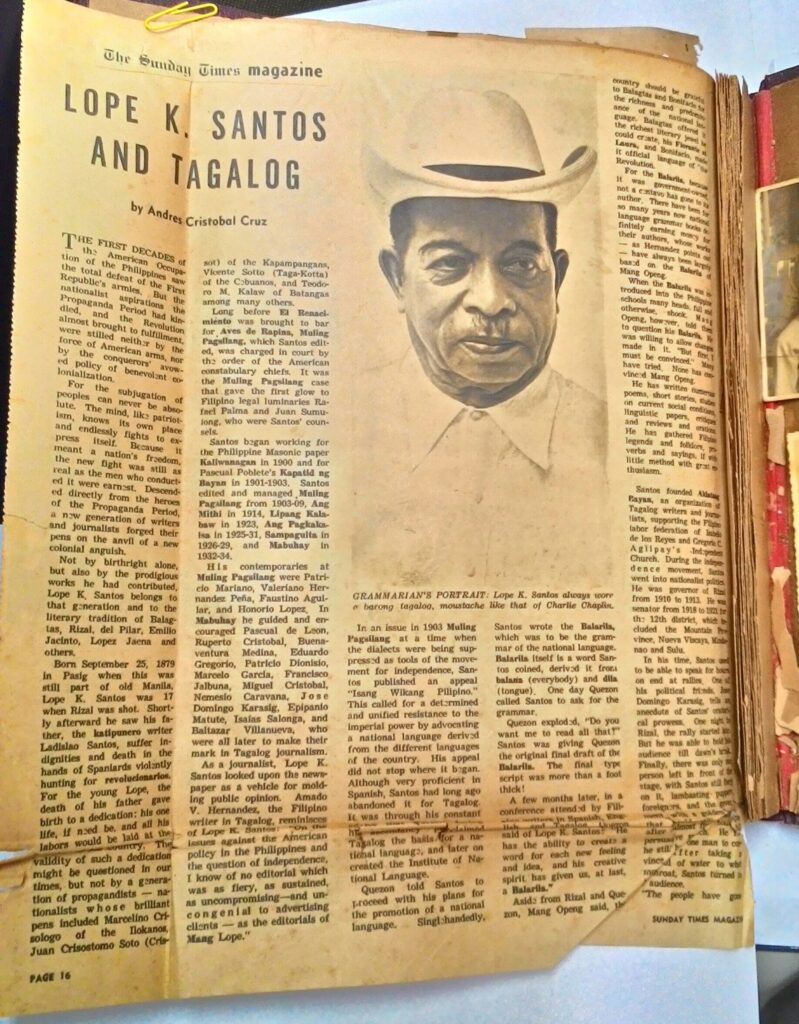
There was a time when the dialects were being suppressed as tools of movement of independence, “Isang Wikang Pilipino” was published to call for a determined and unified resistance to the imperial power by advocating a national language derived from the different languages of the country.
El Renacimiento (The Reinaissance) (1901-1910) is a daily newspaper published in Spanish and Tagalog whose raison d’etre (reason for being) is championing the right and exposing evil. During that time, it is considered the leading voice of the oppositionist.
The men of “El Renacimiento” who believed that writers are crusaders above all, is headed by Teodoro Kalaw, Editor-in-Chief. Other journalist were Martin Ocampo, Lope K. Santos, Rafael Palma and Fidel Reyes.

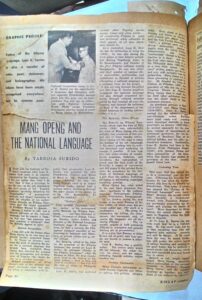
The propagation of national language is the foremost exponent of nationalism in language and literature. - Mang Openg and the National Language
In the 1998 article of Rubrico entitled, “The Metamorphosis of Filipino as National Language” the vernacular is cited as a factor for national solidarity and independence. Bill No. 588 was filed which provided for the use of vernacular as a medium of instruction in public elementary and secondary schools.

There is also a widespread indifference to the teaching of Tagalog and the sense of values is lacking thus, it will take a long time before seeing any progress towards the formulation of a national language.
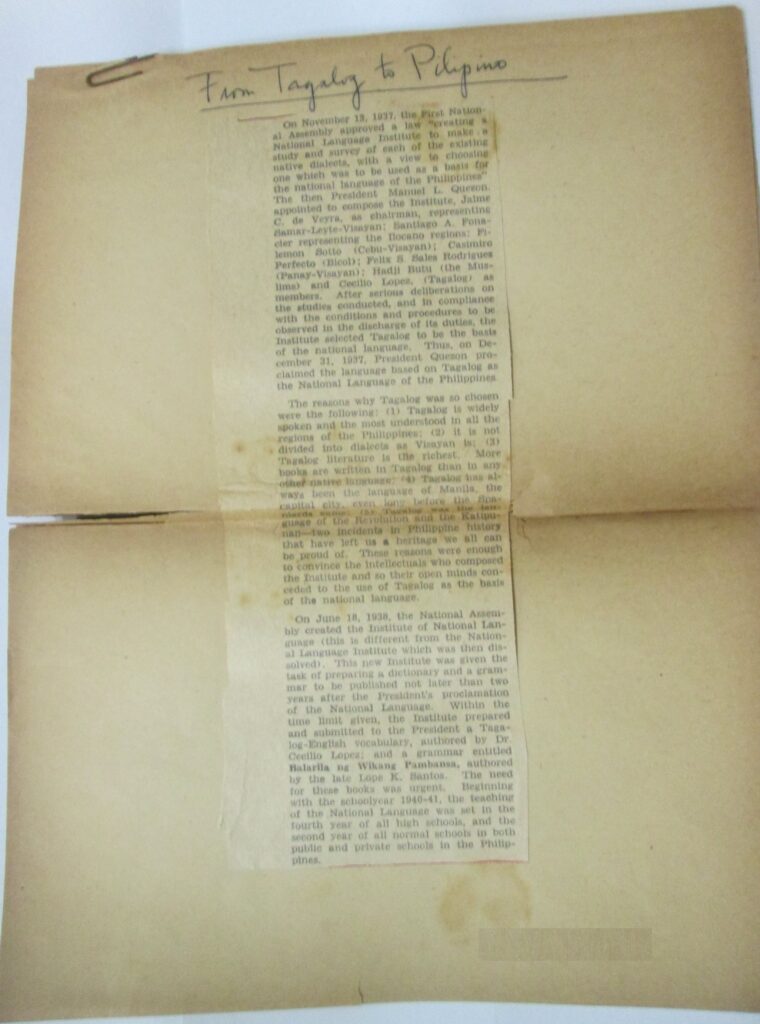
On November 13, 1937, the First National Assembly approved a law “creating a National Language Institute” that will make a study on the various dialects used in country.
On December 31, 1937 President Manuel L. Quezon proclaimed “Tagalog” as the National Language of the Philippines.
Tagalog has always been the language of Manila, even long before the Spaniards came. It was the language of the Revolution and the Katipunan - two incidents in Philippine history that have left us a heritage we all can be proud of.
President Manuel L. Quezon
The Institute of National Language created on June 18, 1938, were given the task of making a Tagalog-English vocabulary authored by Cecilio Lopez.

Lope K. Santos is the one tasked to come up with a grammar book, entitled “Balarila ng Wikang Pambansa.”
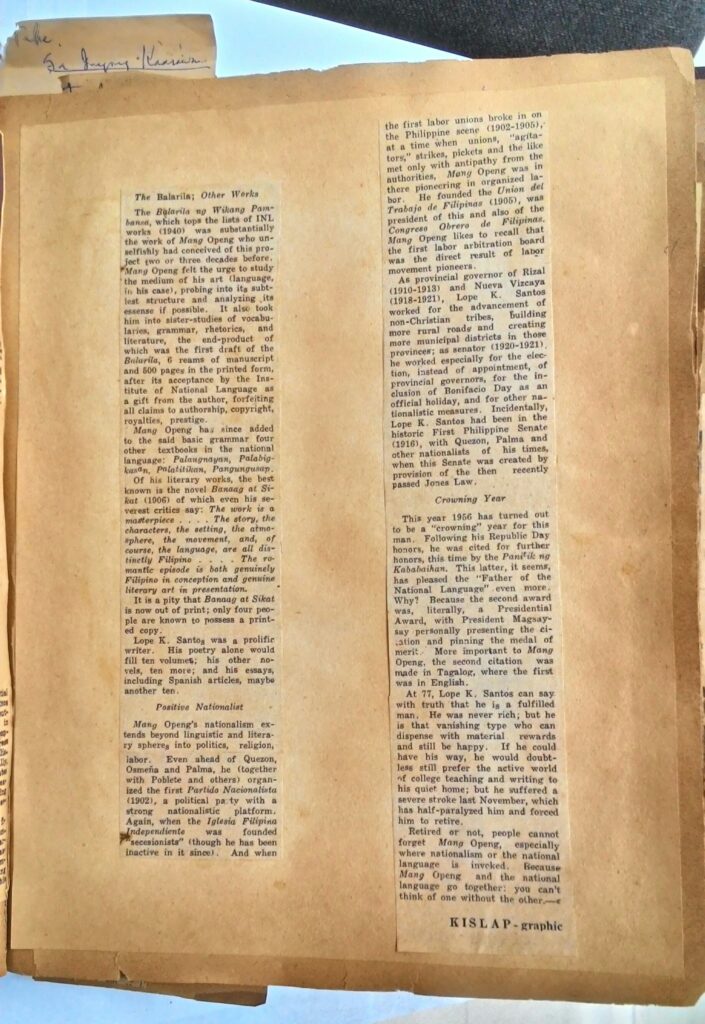
The Balarila ng Wikang Pambansa, which tops the lists of Institute of National Language (1940) was substantially the work of Mang Openg who unselfishly had conceived of this project two or three decades before.
The said basic grammar has four textbooks in the national language: Palaugnayan, Palabigkasan, Palatitikan, Pangungusap.

In one of his interview, Lope K. Santos mentioned that we are headed towards being superficial as there is too much foreign-ism injected into our lives.
He foresees a bleak future for the Filipino Language, decries foreign borrowing injected into the native literature.
The Filipino soul is slowly being lost. - Lope K. Santos
Tweet
From Tagalog Laureate’s Legacy article:
Abandon the puristic idea, which deterred the progress of the propagation of Pilipino as a national language.
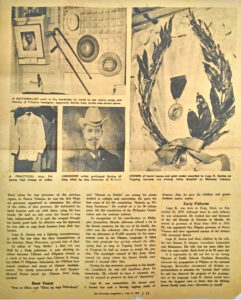
Filipino Today
In the book “Pagpaplanong Wika at Filipino,” by Virgilio S. Almario, it was mentioned that “Filipino” Language lacks identity. It is merely legislated but, it is like an abstract idea that even its own citizen, culture and country cannot relate to it.
The Komisyon sa Wikang Filipino (KWF) in 2013 attempted to define it by way of the Resolution No. 13-39, explaining the necessary modification of the meaning of “Filipino” as a language.
Up to now, our National Language is called “Filipino” because of the provisions mentioned in the 1987 Constitution.
This is an archived version of the original website hosted at reflectionsonfilipinolanguage.info. Some links may not be available. This version is hosted by UP SLIS with permission of the creator. Website and archive material copyright remain with Marlene Patron and Mapua Library Special Collections & Archives.
